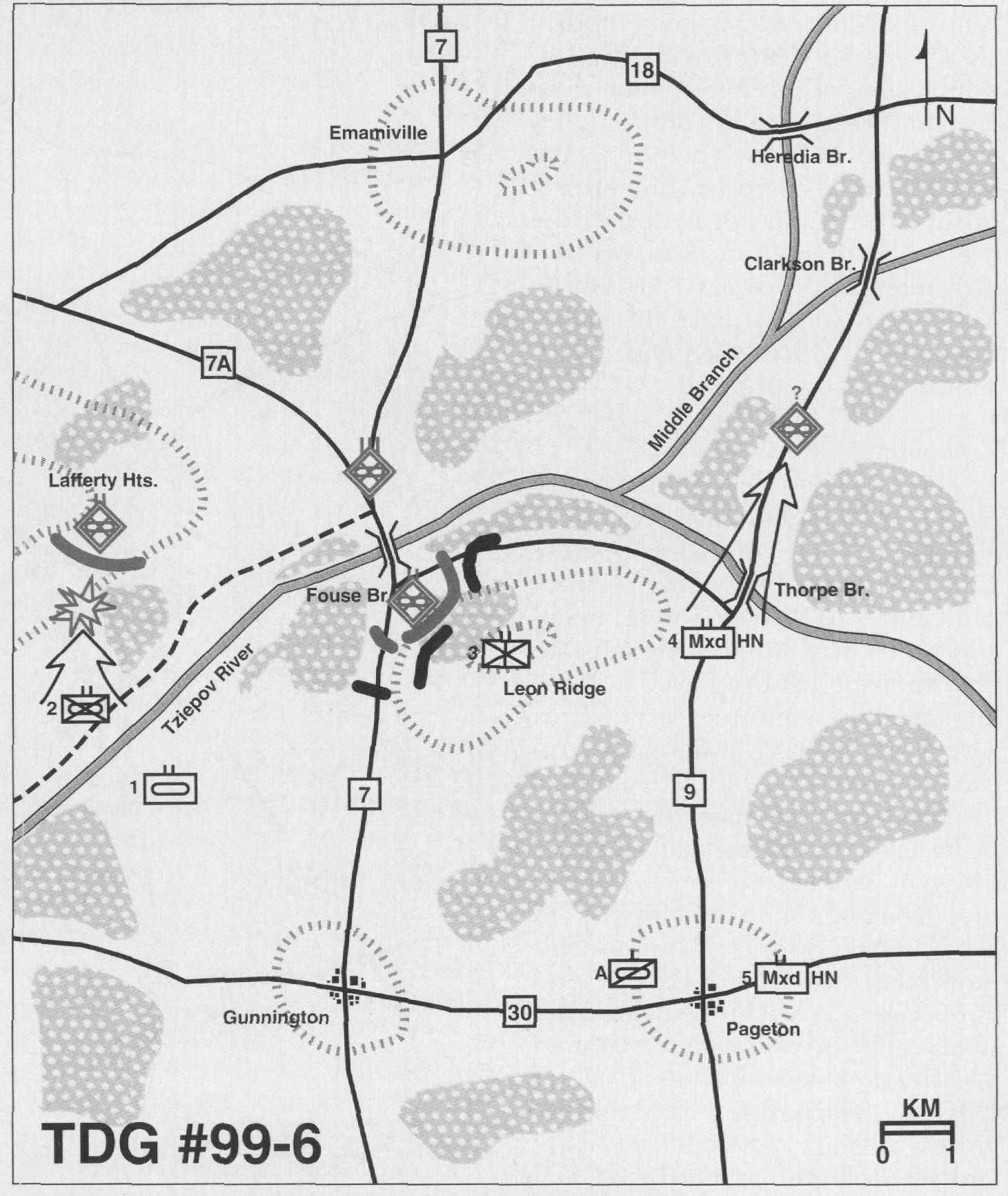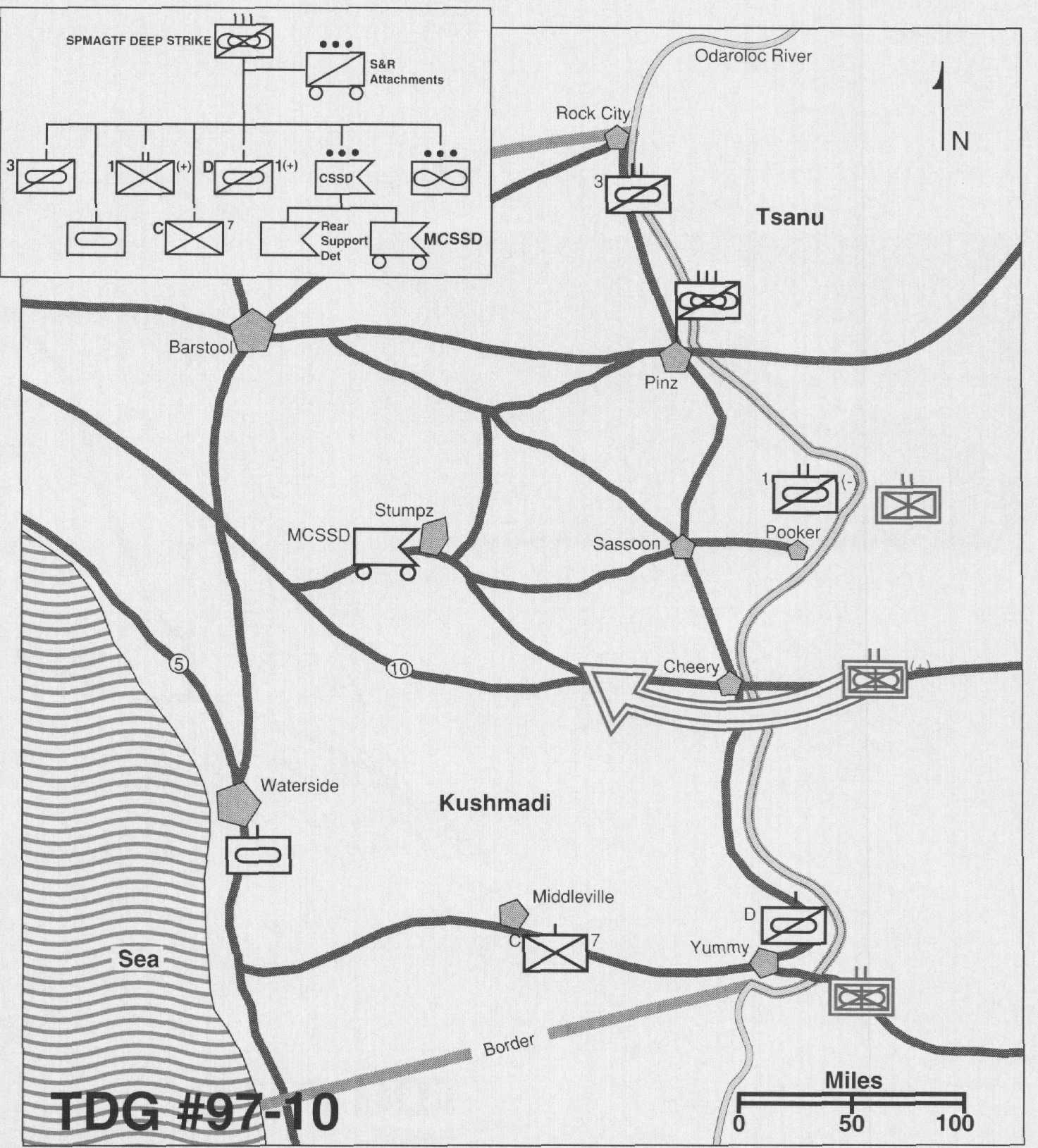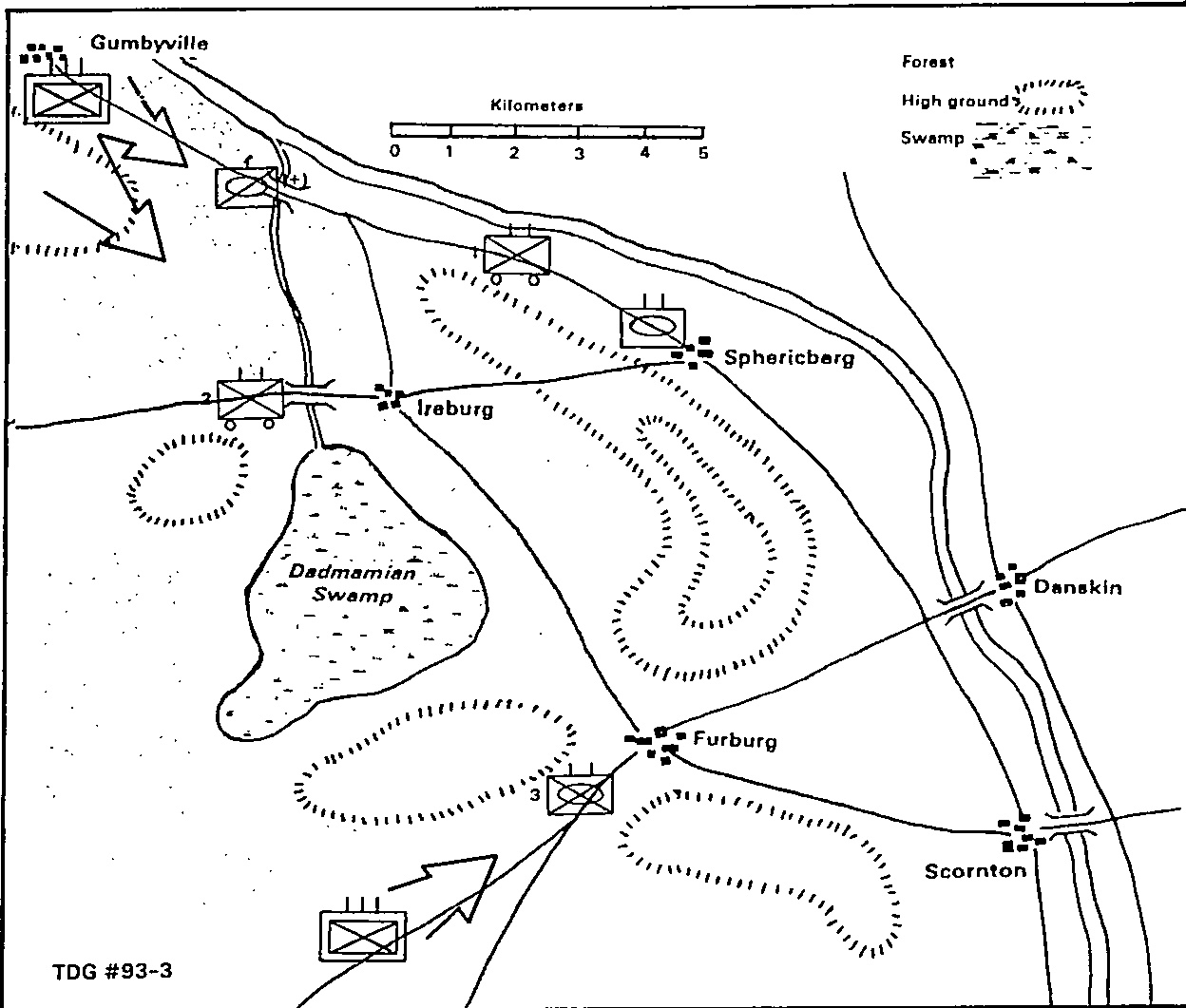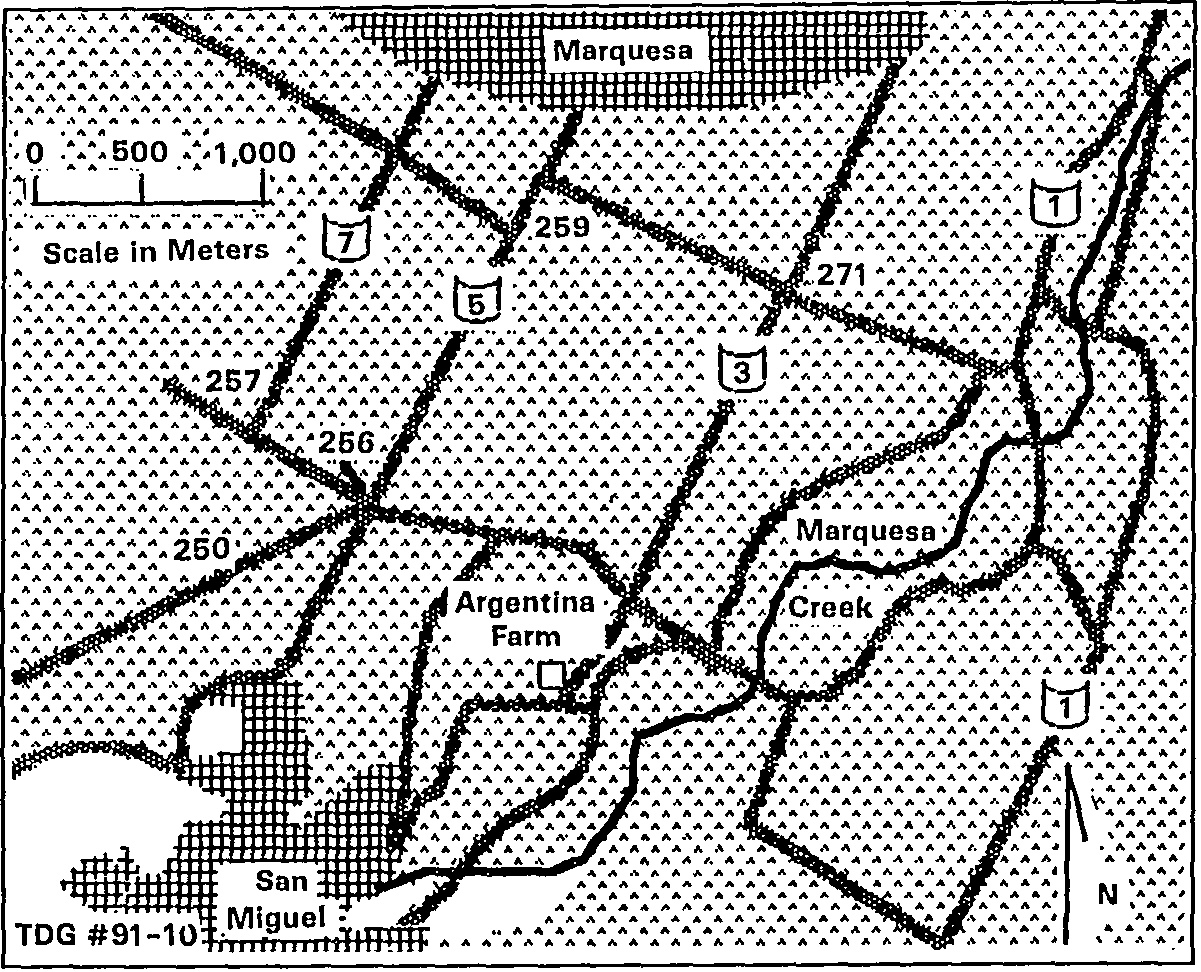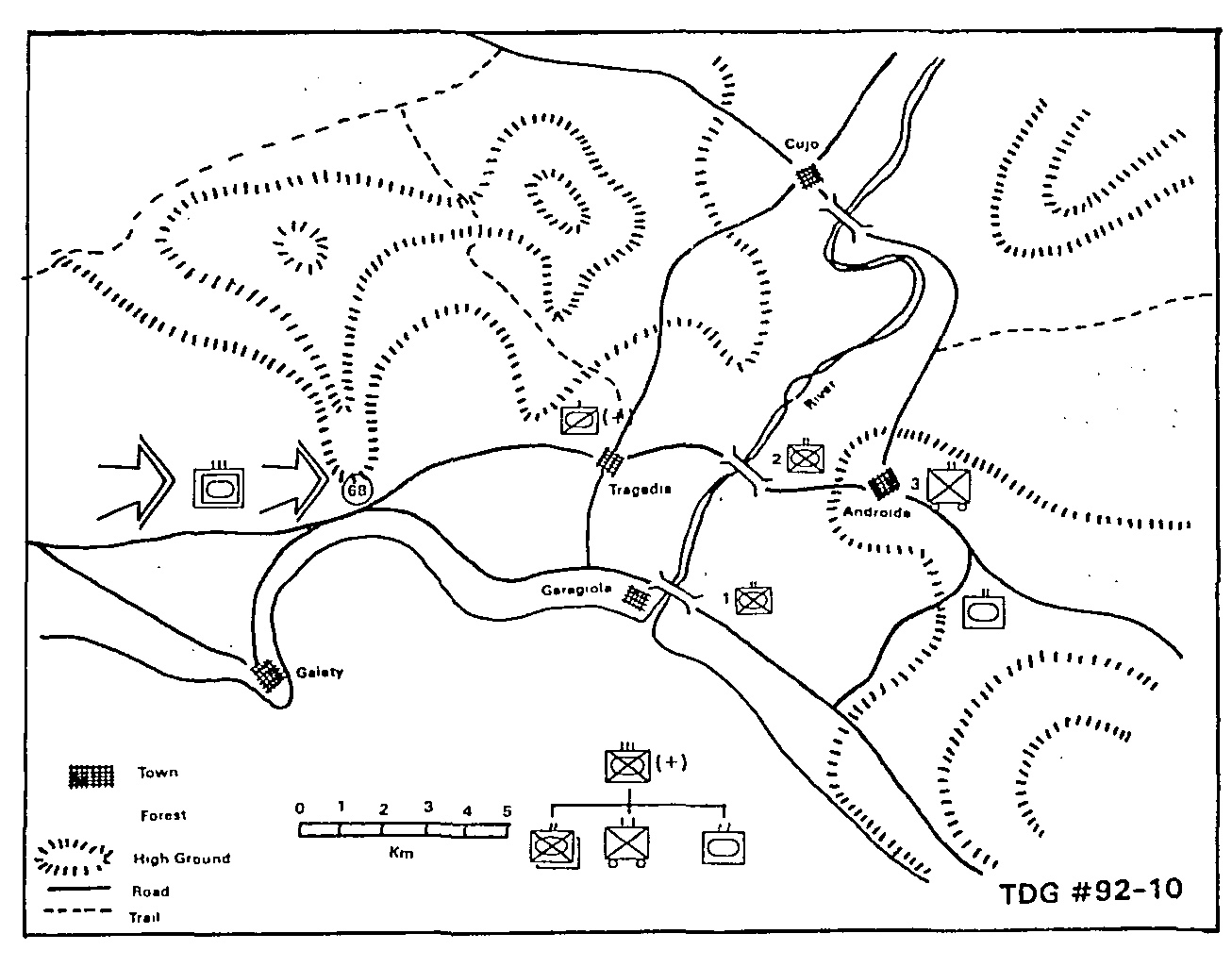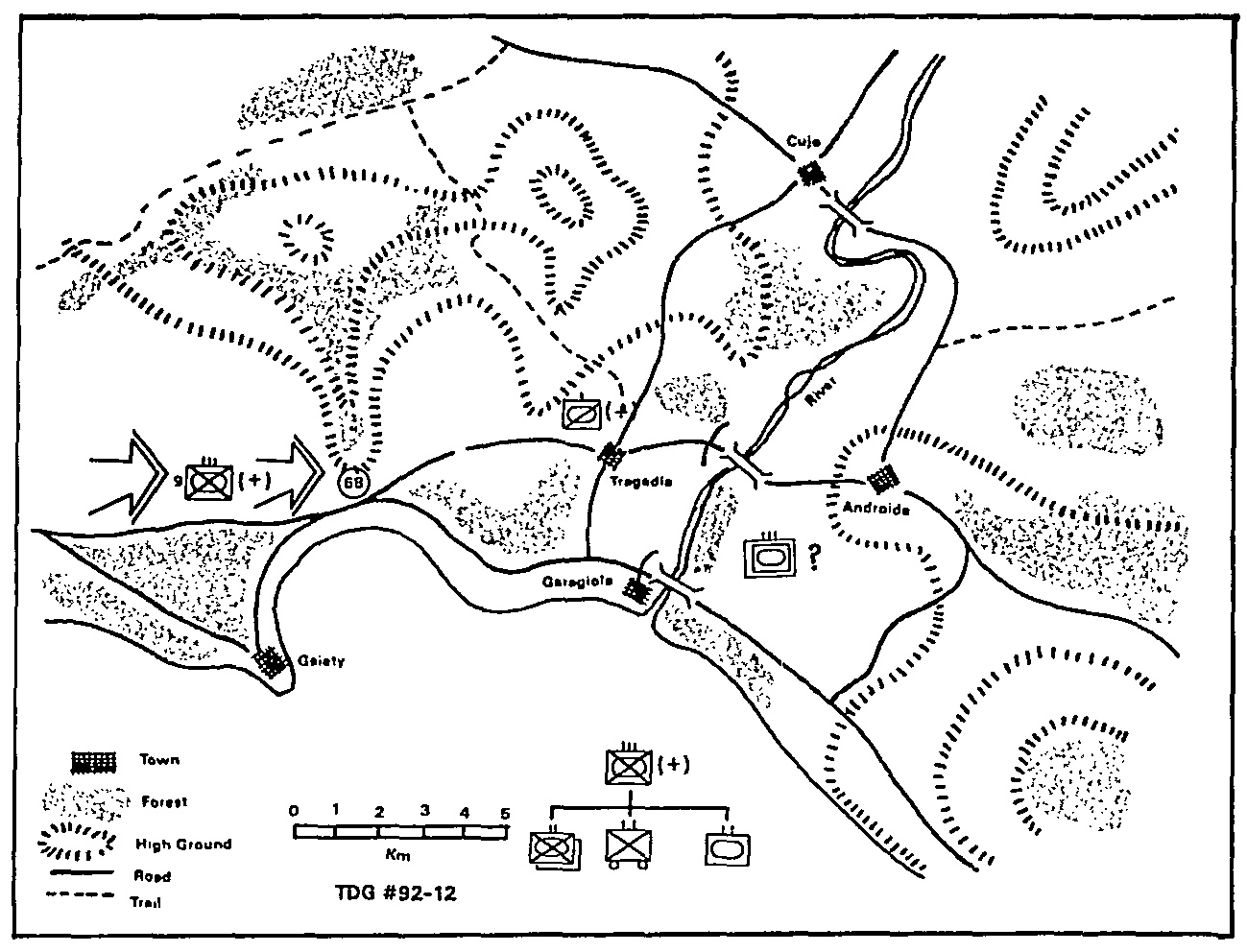Situation
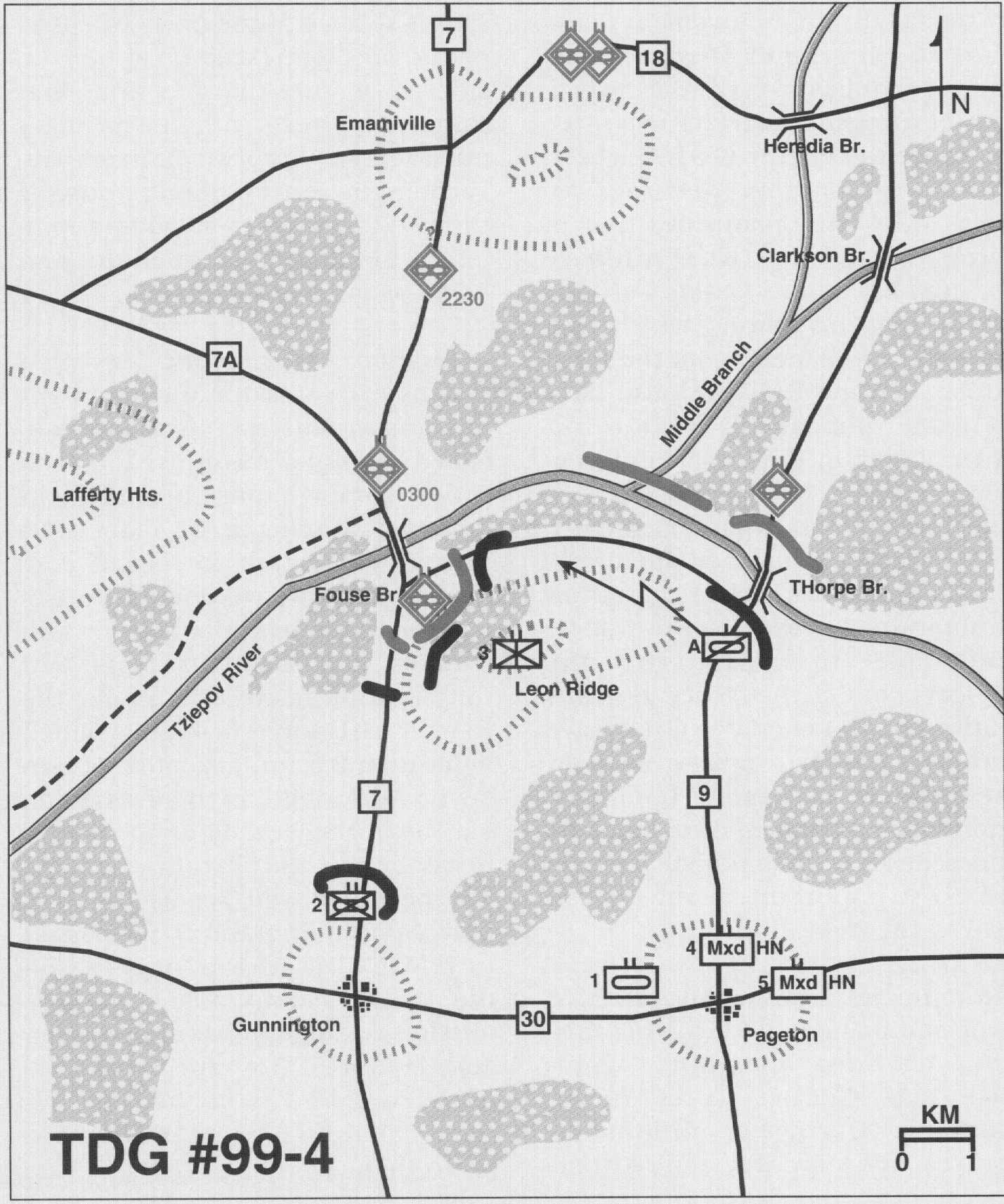 You are the commander of a brigade-size task force consisting of a tank-heavy battalion (1st Bn), a mechheavy battalion (2d Bn), a motorized reinforced infantry battalion (3d Bn), a reinforced light-armored reconnaissance company (Alpha), and 2 host-nation mixed battalions (4th Bn and 5th Bn, each consisting of 2 tank companies and 2 motorized companies). Your host-nation battalions are battle hardened and capable of most basic missions. You are supported by a battalion of direct-support artillery. Your forces are depleted to about 70 percent strength. The terrain is rolling and thickly wooded in places. The wooded areas are impassable to all but infantry. Enemy forces, also depleted, are principally mechanized and motorized.
You are the commander of a brigade-size task force consisting of a tank-heavy battalion (1st Bn), a mechheavy battalion (2d Bn), a motorized reinforced infantry battalion (3d Bn), a reinforced light-armored reconnaissance company (Alpha), and 2 host-nation mixed battalions (4th Bn and 5th Bn, each consisting of 2 tank companies and 2 motorized companies). Your host-nation battalions are battle hardened and capable of most basic missions. You are supported by a battalion of direct-support artillery. Your forces are depleted to about 70 percent strength. The terrain is rolling and thickly wooded in places. The wooded areas are impassable to all but infantry. Enemy forces, also depleted, are principally mechanized and motorized.
Friendly forces (advancing north with the mission of destroying enemy forces en route to the operational objective some 30 kilometers north) and enemy forces (advancing south) have clashed head to head along the trace of the Tziepov River. The Tziepov is a shallow, slow-moving river some 300-400 meters wide (with branches 100-200 meters wide). Upon contact, in an effort to seize the initiative, both forces have started shifting west, trying to turn the other’s flank and establish a bridgehead on the far side of the river. Unopposed crossings of the Tziepov, although time-consuming, are generally not difficult for vehicles or infantry. Assault crossings are another story. Fording sites can be found along most stretches of the river; generally, wherever the river is accessible, crossing sites can be found.
Your brigade is sent west along Rte. 30 with urgent instructions to secure bridges in the vicinity Emamiville-Gunnington-Pageton, or at least to deny those crossing sites to the enemy. Combat intelligence indicates an enemy mechanized regiment closing on Emamiville from the east along Rte. 18. Alpha races ahead and clashes with a reinforced enemy company of tanks and mech at Thorpe Bridge. After a heated engagement, Alpha repulses the enemy, who withdraws to blocking positions north of the river. 3d Bn reinforces Alpha and also continues west and meets an enemy battalion in the process of crossing at Fouse Bridge. Meanwhile, sensor hits indicate heavy vehicular traffic between Emamiville and Fouse Bridge. As darkness falls, a close, confused engagement develops on the wooded slopes of Leon Ridge. The 3d Bn commander reports he has only a rough idea of current friendly– enemy dispositions and that the operation has devolved into a series of intense small unit actions with the use of supporting arms being problematic.
By 2130, Alpha holds its position south of Thorpe Bridge and also screens the river between Rtes. 7 and 9, making periodic contact with enemy probes along its entire front. The company commander estimates he is now opposed by a battalion. 2d Bn has established a blocking position along Rte. 7 north of Gunnington. By 2300, 1st, 4th and 5th Bns occupy assembly areas near Pageton. Your mobile combat service support detachment (MSSD) has already replenished Alpha in its positions and will have your units in GunningtonPageton replenished by 0300. Throughout the night, reconnaissance teams report continuing vehicular movement, estimated at more than battalion strength, west across Heredia Bridge on Rte. 18. By 0030, 3d Bn commander reports the sounds of significant mechanized activity near Fouse Bridge. He reports that the situation has stalemated, with friendly and enemy forces interspersed and the enemy holding a tenuous bridgehead south of the river. He estimates that the situation is very unstable and will not be sorted out at least until dawn. In the meantime, a lull seems to have settled over the battlefield. What will be your next move?
Requirements
1) In a time limit of 15 minutes, make your decision in the form of any order/guidance you will issue to subordinates and/or reports/requests you will make. Your staff can work out the complete order as time permits. Include a sketch of your scheme. 2) In an additional 5 minutes, explain likely or possible follow– on actions you are considering. 3) Provide a brief explanation of your decision and follow-on plan. Submit your solution to Marine Corps Gazette, TDG #99-4, P.O. Box 1775, Quantico, VA 22134 or fax 703-640-0823.
For more detailed information on the structure of Marine Corps units, Marine Corps equipment, and .symbols used in TDG sketches, see MCG, Oct94, pp. 53-56 and the modification reported in Jan95, p. 5.


